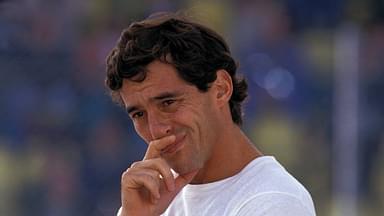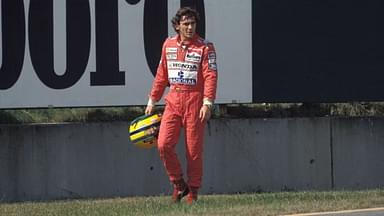Years after Ayrton Senna’s tragic death, the writer of the late Brazilian driver’s biography, Tom Rubython, blamed the three-time world champion for his own death. Rubython wrote that Senna overlooked the biggest safety measures of the track around Tamburello corner which was the tire wall.
“Whatever other reasons there were for Senna’s death that day – the track, the car, his own driving skills (and no one really knows to this day), – he sealed his fate by not asking for a tire wall. So, when the inevitable loss of control happened, he was unprotected,” explained Rubython.
Ayrton Senna was ‘responsible for his own death.’
Credit: The Life of Senna : The Biography of Ayrton Senna. pic.twitter.com/k81FqJbsey
— TheF1Guy (@Sabyasaachii) December 21, 2023
In the book, Rubython also revealed how Ayrton Senna met with Imola circuit director Giorgio Poggi, two months before his life-ending accident. However, instead of asking to sort out the Tamburello corner, Senna asked Poggi to smoothen a bump on the track.
Since Poggi was very fond of Ayrton Senna, the late Brazilian could have asked for anything to sort out the fatal corner. Even on Friday, days before the race, Rubens Barrichello’s life was saved by tires when he lost control of his car and plunged into them.
“Whilst Senna and Poggi discussed bumps in the track, they missed the big picture. Senna merely had to say to Poggi: ‘Put me a row of tires along that wall will you Giorgio’ and it would have been done. Two or three rows, if he had asked. But he didn’t. In that way, he was responsible for his own death. He had the means to prevent it,” wrote Rubython.
What happened in the aftermath of Ayrton Senna’s death?
Ayrton Senna’s death sent shockwaves throughout the motorsport world. There were lots of grievances, but the more pressing concerns were the limitless questions regarding safety that were raised following his tragic death.
The three-time world champion’s death was one of the key reasons why crucial steps were taken to improve safety. A few days after the accident, the Grand Prix Drivers’ Association (GPDA) was formed, and a few other safety measures were taken.
Some of them were the introduction of curves in the entry and exit of the pit lane to reduce speed. Moreover, except for team officials and crew, nobody else was allowed in the pit lane.







